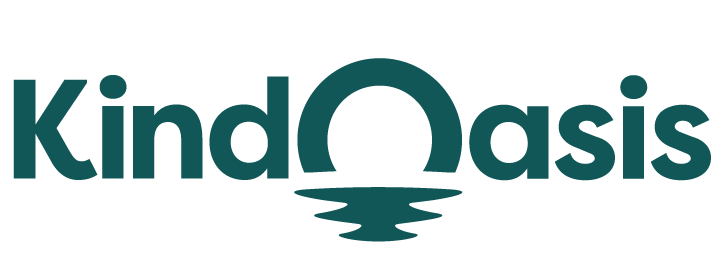Understanding the Favicon Image on Shopify: What You Need to Know
Try AI ChatbotDiscover how to find a Shopify email address easily with this step-by-step guide. Improve communication today!

Understanding the Favicon Image on Shopify: What You Need to Know
A favicon, short for "favorite icon," is a small, iconic image associated with a website, typically displayed in the browser's address bar, tab, or bookmarks. On Shopify, the favicon plays a crucial role in brand recognition and enhancing the user experience. This comprehensive guide will explore what a favicon image is, its importance, and how to optimize it for your Shopify store. Let's dive in and understand why this tiny image packs a big punch in the digital landscape.
What is a Favicon Image on Shopify?
A favicon image on Shopify is a small icon that represents your online store. It appears next to the page title in browser tabs, bookmarks, and even in search engine results. This simple image helps create a visual connection to your brand, making it easier for customers to identify and return to your store.
The favicon is usually a condensed version of your logo or another distinctive brand image. Given its small size (usually 16x16 pixels), the favicon must be clear and recognizable. Shopify provides an easy way to add and customize your favicon through the admin panel, ensuring your store's branding is consistently presented across all touchpoints.
To get started with adding a favicon to your Shopify store, check out this detailed guide from Shopify.
Importance of Favicon for Your Shopify Store
1. Enhances Brand Recognition
Favicons significantly contribute to brand recognition. A well-designed favicon ensures that your brand stands out in a crowded browser tab or bookmark list. This small yet impactful element helps reinforce your brand identity every time a customer visits your store.
2. Improves User Experience
Favicons improve the user experience by making it easier for visitors to identify your site among multiple open tabs. This convenience can lead to increased user satisfaction and repeat visits, as customers can quickly return to your store without confusion.
3. SEO Benefits
While not a direct ranking factor, favicons can indirectly benefit SEO. They enhance user experience and engagement, which can positively influence your site's performance in search engine results. Additionally, a favicon can make your site appear more professional and trustworthy, potentially leading to higher click-through rates.
For more insights on optimizing your favicon for better brand recognition, refer to this Shopify community post.
How to Add and Optimize a Favicon on Shopify
Step 1: Design Your Favicon
Start by designing a favicon that is simple, clear, and reflective of your brand. Tools like Adobe Illustrator or free online favicon generators can be helpful. Ensure the design is recognizable even at a small size.
Step 2: Upload Your Favicon
- Go to your Shopify admin panel.
- Click on "Online Store" and then "Themes."
- Click on "Customize" for your current theme.
- In the theme editor, click on "Theme settings" and then "Favicon."
- Upload your favicon image and save the changes.
For a step-by-step guide on adding a favicon to Shopify, visit this comprehensive tutorial.
Step 3: Optimize Your Favicon
Ensure your favicon is in the correct format (ICO, PNG, or GIF) and is optimized for different devices and resolutions. A 16x16 pixel version is standard, but creating larger versions (32x32, 48x48, or 64x64) can ensure clarity on various devices.
Read more about favicon optimization in this in-depth article.
Enhancing Your Shopify Experience with Vanchat
While optimizing your Shopify store’s favicon is essential for brand recognition and user experience, integrating AI tools like VanChat can further elevate your store's functionality and customer interaction. VanChat is an AI-powered pre-sales chatbot for Shopify designed to enhance the shopping experience and boost sales. It can accurately answer 97% of customer questions without human intervention, addressing queries about product comparisons, order tracking, sizing, and returns. By continuously learning from your store’s text, images, and videos, VanChat ensures precise and timely responses, automating tasks such as checking orders and updating carts based on shopper requests.
Personalization is a key feature of VanChat, offering tailored product recommendations based on user preferences, shopping habits, and specific needs. It asks follow-up questions to better understand user requirements and analyzes behavior, purchase history, and chat logs to create detailed profiles for more accurate interactions. This personalized approach helps speed up purchase decisions and enhances user satisfaction.
VanChat also focuses on proactive sales by sending timely discount reminders and suggesting best-selling products through pop-ups. It identifies latent needs during conversations, recommending products to drive sales. Powered by the GPT-4 language model, VanChat integrates seamlessly with Shopify, providing a real-time, interactive shopping experience that helps users find suitable products and complete their purchases. Explore more about VanChat here.
Conclusion
Understanding and optimizing the favicon image on your Shopify store is a crucial step in enhancing brand recognition, improving user experience, and indirectly boosting your SEO efforts. By following the steps outlined in this guide, you can ensure that your favicon is effectively contributing to your store's success. Additionally, integrating tools like VanChat can further enhance your store's functionality and customer interactions, providing a seamless and personalized shopping experience.
Relevant Links
- VanChat Official Website
- Shopify Favicon Optimization Guide - Mapplinks
- Improve Brand Recognition by Adding a Favicon - Shopify Community
- Adding a Favicon - Shopify Help Center
- Complete Guide to Shopify Favicons - HeyCarson
- Understanding and Adding a Favicon Image on Shopify - HulkApps
By integrating these resources, you'll have a robust understanding of favicons and their impact on your Shopify store, ensuring your branding efforts are both effective and efficient.




